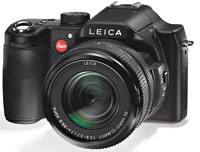 There’s been a flurry of interesting announcements from some of the photographic bigwigs leading up to the Photokina ‘World of Imaging’ Trade Show, which is held every two years at the Cologne Exhibition Centre, Germany.
There’s been a flurry of interesting announcements from some of the photographic bigwigs leading up to the Photokina ‘World of Imaging’ Trade Show, which is held every two years at the Cologne Exhibition Centre, Germany.
The show runs from 26th September to 1st October, and we can expect further product announcements in the build up to the opening day.
As well as the fantastic Leica M8 camera we’ve already drooled and dribbled over, Leica also revealed three other cameras, all based on current Panasonic models.
 Leica DIGILUX 3 dSLR
Leica DIGILUX 3 dSLR
The DIGILUX 3 dSLR – which is essentially a Panasonic DMC-L1 – opts for the Four Thirds system instead of Leica’s own reflex lens mount, and comes with the innovative 7.5 megapixel LiveMOS sensor for real-time, live photo previewing.
Bundled in with the package is a LEICA D 14 – 50 mm ASPH (F2.8 – F3.5) lens with built-in optical image stabilization.
 Leica V-LUX 1
Leica V-LUX 1
Based on Panasonic’s DMC-FZ50, the V-LUX1 looks to be a well-specified enthusiast digicam, with a beefy ten megapixel CCD, a 12x optically image stabilised lens (35 – 420 mm equiv., with mechanically linked zoom), a tilting 2.0″ LCD monitor, electronic viewfinder, flash hot-shoe and full manual controls.
Movie clips can be recorded at 848 x 480 (16:9), 30 / 10 fps, with ISO options running from 80 up to 800ISO (with a high sensitivity 3200 mode).
Leica D-LUX 3
The ultra-compact D-LUX 3 is based on the eagerly awaited Panasonic LX-2 camera, and sports a ten megapixel 16:9 ratio CCD, Leica 4x wide angle optical zoom lens (28 to 112 mm equiv.) with optical image stabilization and a 2.8″ 16:9 ratio LCD monitor.
All the cameras have had image processing adjustments as defined by Leica, and, of course, spot that lovely red badge that says to the world, “I have considerably more money than yow.”
(See DPreview.com for more Leica specs)
New Canon cameras
Canon have also rocked up with a full trolley of new products, with the most interesting of the bunch being the long overdue upgrade to the Powershot G6 which was launched as long ago as August 2004.
Canon PowerShot G7
The PowerShot G7 features a 10 megapixel (1/1.8-inch) CCD, a new Digic III processor and a 6x (35-200mm equiv.) image stabilised zoom lens.
The camera comes with a 2.5″ high-resolution LCD – sadly without a swivel-out feature – with wide viewing angle and anti-glare coating and 25 shooting modes including full manual control and 2 custom settings.
There’s also a hot shoe, face detection software and ISO settings up to 1600, but keen photographers will be disappointed to see that there’s no RAW mode. Price is set around $550.
 Canon PowerShot SD900
Canon PowerShot SD900
The $450/€450 Canon PowerShot SD900 Digital ELPH (Ixus 900 Ti in Europe), looks natty in its tough titanium finish and comes with Canon’s new Digic III processor, face detection, a 10 megapixel CCD with an ISO range of 80 – 1600.
Movies can be recorded at 1024 x 768 @ 15fps or 640 x 480 @ 30 / 15fps, and the camera offers a 3x optical zoom (37-111mm, 35mm equiv) at f2.8-4.9.
Canon PowerShot SD800 IS
Looking to be a well-specified compact, the SD800 Ixus/ELPH offers shift-type image stabilisation, a large 2.5-inch screen, face detection technology and 7.1MP sensor.
 Impressively, the $449 / €449 camera offers a wideangle 3.8x zoom (28-105mm) along with the usual zillions of scene modes.
Impressively, the $449 / €449 camera offers a wideangle 3.8x zoom (28-105mm) along with the usual zillions of scene modes.
Canon PowerShot SD40
Finishing off the rollcall of new Canon products, is PowerShot SD40 Digital ELPH (Ixus i7), an upgrade to their popular SD30.
The pocket sized compact comes with the new Digic III processor, ISO 1600, face detection and a 7.2 megapixel CCD and – look out fashionistas! – will be offered in a range of four ‘chic’ new colours.
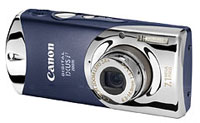 (See DPreview.com for more Canon specs)
(See DPreview.com for more Canon specs)
Olympus E-400
Olympus’s new ten megapixel compact digital SLR looks to be a bit of a beaut to our eyes, offering the Supersonic Wave Filter for dust reduction, a 2.5″ LCD monitor, three frames per second continuous shooting and an improved interface.
Coming with a 14-42 mm F3.5-F5.6 kit lens, the dSLR uses the Four Thirds Standard and offers both CompactFlash and xD-Picture Cards storage.
There’s a veritable flotilla of scene modes onboard, as well as a host of advanced features for enthusiasts.
Bizarrely, Olympus have decided not to release this camera in the States.
www.olympus.co.uk
Pentax K10D
Last, but by no means least, is Pentax’s new ten megapixel K10D digital SLR.
This comes with CCD-shift type Shake Reduction, a dust removal system, environment sealing, eleven point auto focus, sixteen segment metering, and a new Sensitivity-Priority AE (Sv) mode, which is designed to automatically select the optimum combination of aperture and shutter speed for a user-selected sensitivity.
ISO sensitivity can be set from 100 to ISO 1600, with continuous shooting at approximately three images per second.
Pentax
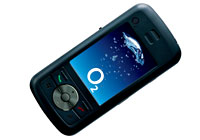 Slated for an October release is the swish O2 Xda Stealth PDA phone, clad in ‘ebony black’ and featuring a slide-up numerical keypad.
Slated for an October release is the swish O2 Xda Stealth PDA phone, clad in ‘ebony black’ and featuring a slide-up numerical keypad. 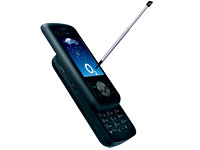 The front panel is dominated by a 2.4 inch touch screen supporting a resolution of 320 x 240 pixels and 65,000 colours.
The front panel is dominated by a 2.4 inch touch screen supporting a resolution of 320 x 240 pixels and 65,000 colours. 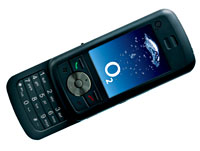 A SD card slot takes care of expansion needs, while the 1300 mAh Lithium Ion battery provides a claimed 150 hours of talktime and 4.5 hours of standby time.
A SD card slot takes care of expansion needs, while the 1300 mAh Lithium Ion battery provides a claimed 150 hours of talktime and 4.5 hours of standby time.  Warner Music Group has announced a deal with YouTube to distribute music videos, as well as extras such as band interviews, behind-the-scenes footage and artist rockumentaries.
Warner Music Group has announced a deal with YouTube to distribute music videos, as well as extras such as band interviews, behind-the-scenes footage and artist rockumentaries.  “As user-generated content becomes more prevalent, this kind of partnership will allow music fans to celebrate the music of their favourite artists, enable artists to reach consumers in new ways, and ensure that copyright holders and artists are fairly compensated,” he continued.
“As user-generated content becomes more prevalent, this kind of partnership will allow music fans to celebrate the music of their favourite artists, enable artists to reach consumers in new ways, and ensure that copyright holders and artists are fairly compensated,” he continued.  A Brazilian company has forged a software bridge between Asterisk and Skype.
A Brazilian company has forged a software bridge between Asterisk and Skype.  One feature that has been missing is Skype integration (the next version of Asterisk v1.4 supports GoogleTalk using Google’s libjingle library). A Brazilian company has now changed that, with their ChanSkype site.
One feature that has been missing is Skype integration (the next version of Asterisk v1.4 supports GoogleTalk using Google’s libjingle library). A Brazilian company has now changed that, with their ChanSkype site.  If you’ve admired the look of that bloke in Star Trek with the funky sci-fi specs, then maybe the Eye-Theatre glasses might be just the thing for you.
If you’ve admired the look of that bloke in Star Trek with the funky sci-fi specs, then maybe the Eye-Theatre glasses might be just the thing for you.  Weighing just 78g, the Eye-Theatre should be good for eight hours between charges (USB charger supplied), and anyone desperate to get that cyber-berk look can pre-order their video glasses from PDT’s website for £149.99, with the launch expected in mid-October.
Weighing just 78g, the Eye-Theatre should be good for eight hours between charges (USB charger supplied), and anyone desperate to get that cyber-berk look can pre-order their video glasses from PDT’s website for £149.99, with the launch expected in mid-October.  Dick Tracy had one and when I was a kid I would have swapped my entire collection of 2000AD comics for one, but users down under in Oz will soon be able to start talking into their wrist watches and not face arrest on psychiatric charges.
Dick Tracy had one and when I was a kid I would have swapped my entire collection of 2000AD comics for one, but users down under in Oz will soon be able to start talking into their wrist watches and not face arrest on psychiatric charges.  Anyway, back to the M300, the specs say that it offers GSM/GPRS 900/1800/1900 MHZ connectivity, Bluetooth (with bluetooth headset for voice call only), a teensy-weensy 65K OLED (0.9″) display and “Speaker Phone Text base UI,” whatever that is.
Anyway, back to the M300, the specs say that it offers GSM/GPRS 900/1800/1900 MHZ connectivity, Bluetooth (with bluetooth headset for voice call only), a teensy-weensy 65K OLED (0.9″) display and “Speaker Phone Text base UI,” whatever that is.  I guess the bit that the designers forgot about is that talking into a watch is going to make you look distinctly odd and that watch sales have been steadily declining as users are preferring to use the time displays on their phones, PDAs and MP3 players…
I guess the bit that the designers forgot about is that talking into a watch is going to make you look distinctly odd and that watch sales have been steadily declining as users are preferring to use the time displays on their phones, PDAs and MP3 players…  CSR, a chipset design lab in Cambridge that specialises in radio, has released a voice over WiFi design (UniVox) which a bill of materials of around £11.00.
CSR, a chipset design lab in Cambridge that specialises in radio, has released a voice over WiFi design (UniVox) which a bill of materials of around £11.00.  Both SIP (version 2) and IAX2 (Inter Asterisk Protocol v2) are supported. IAX is useful in NAT environments as it can traverse NAT without any special software, while SIP can be a complete headache.
Both SIP (version 2) and IAX2 (Inter Asterisk Protocol v2) are supported. IAX is useful in NAT environments as it can traverse NAT without any special software, while SIP can be a complete headache.  There’s been a flurry of interesting announcements from some of the photographic bigwigs leading up to the Photokina ‘World of Imaging’ Trade Show, which is held every two years at the Cologne Exhibition Centre, Germany.
There’s been a flurry of interesting announcements from some of the photographic bigwigs leading up to the Photokina ‘World of Imaging’ Trade Show, which is held every two years at the Cologne Exhibition Centre, Germany.  Leica DIGILUX 3 dSLR
Leica DIGILUX 3 dSLR Leica V-LUX 1
Leica V-LUX 1 Canon PowerShot SD900
Canon PowerShot SD900 Impressively, the $449 / €449 camera offers a wideangle 3.8x zoom (28-105mm) along with the usual zillions of scene modes.
Impressively, the $449 / €449 camera offers a wideangle 3.8x zoom (28-105mm) along with the usual zillions of scene modes. 
 With it’s big and bright 640 x 480 screen, built in Wi-Fi and Bluetooth and pocket pleasing form factor, the Palm T|X is a near-perfect PDA, except for one thing – Palm forgot to fit a bloomin’ microphone!
With it’s big and bright 640 x 480 screen, built in Wi-Fi and Bluetooth and pocket pleasing form factor, the Palm T|X is a near-perfect PDA, except for one thing – Palm forgot to fit a bloomin’ microphone! 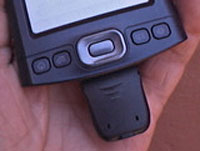 There’s no need to buy any third party software either, as users can download the freeware
There’s no need to buy any third party software either, as users can download the freeware 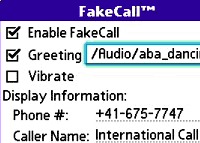 You must all be familiar with this dreadful situation when you’re stuck in a late Friday work meeting that never seems to end, while your mates are already in the pub.
You must all be familiar with this dreadful situation when you’re stuck in a late Friday work meeting that never seems to end, while your mates are already in the pub. 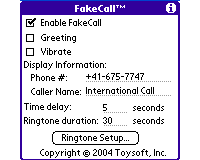 Ringtones can be set as required and when the phone rings, it’ll even display the name of the fake caller, so you can let your boss see how really urgent the call must be.
Ringtones can be set as required and when the phone rings, it’ll even display the name of the fake caller, so you can let your boss see how really urgent the call must be.  Those studious fellows at ABI Research are projecting that the CapEx (Capital Expenditure) of the mobile/cellular business worldwide will exceed $150Bn, with the majority being spent on WCDMA (Wideband Code Division Multiple Access).
Those studious fellows at ABI Research are projecting that the CapEx (Capital Expenditure) of the mobile/cellular business worldwide will exceed $150Bn, with the majority being spent on WCDMA (Wideband Code Division Multiple Access).